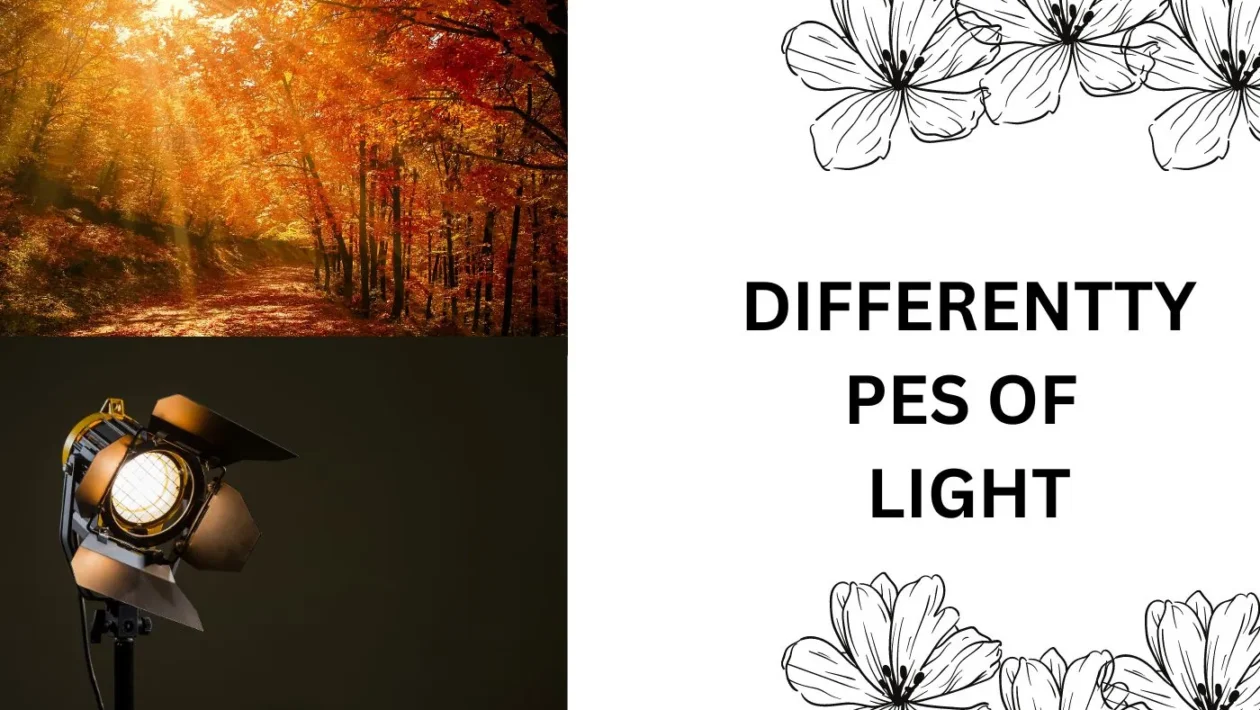Lightning is a crucial element in video production, as it not only eliminates the sein but also sets them out highlighting pattern elements and enhancing the overall visual appeal. In video production, various types of light sources are used to achieve different effects in trade compelling visual narrative. Understanding these different types of light can help filmmakers and Videographers to effectively use these lights in their stories.
TYPES OF LIGHT
Natural Light
Natural light is also known as available light Esther light that is not artificially created. It comes from the Moon or stars and can vary in intensity, color, and direction, depending on the time of day and weather conditions. Natural light can create a soft, diffused, especially during sunrise and sunset, which is often referred to as the ”golden hour”. It can also create dramatic shadows and highlights depending on the angle of the light source.
Artificial light
Artificial light is the light that is produced by manmade sources such as tungsten light, fluorescent light LED light, and HMI lights. These lights can be used to stimulate natural light to create specific lighting effects. For example, tungsten light produces a warm soft light that is often used for interior scenes, while HMI lights produce a daylight balance that is ideal for auto shoots.
Key Light
The key light is the primary light source in a scene and is used to eliminate the subject. It is usually a bright taste light on the set and is placed at 45 degrees to the subject, either above or to the side. The key light helps define the shape and forms of the subject and sets the overall mood of the scene.
The key light is the primary light source in a scene and is used to illuminate the subject. It is usually the brightest light on set and is placed at a 45-degree angle to the subject, either above or to the side. The key light helps define the shape and form of the subject and sets the overall mood of the scene.
Fill light
The fill is used to fill in the shadows created by the key light and provide more balance in the lighting setup. It is usually placed on the opposite side of the key line, and less intense than the key line. The fill light helps to reduce the contrast in the Saints and creates a more natural-looking image.
Backlight
The Backlight, also known as the rim light, is placed behind the subject and is used to separate the subject from the background . It creates a hollow effect around the subject making them standard move and move adding depth to the image. The backlight is especially used in creating three conventional looks in a scene.
Practical light
Practical lights are lights that are visible in the frame, and the part of the set design. They can include lamps, candles, streetlights, and other light sources that are meant to be seen on camera. Practical light can add realism to a scene and help create a specific atmosphere.
Ambient light
Ambient light is the natural light in the scene. That is not controlled by any filmmaker. It includes light from windows, doors, and other sources that can influence the overall light of a scene. Ambient light can be used to enhance the mood of a sea to create a specific time of the day.
Colored light
Colored light is used to create a specific mood or atmosphere in a scene. It can be achieved by colored gels of filters placed over the light source. Colored light can add depth and dimension to a scene, and can help convey emotions and themes.
Conclusion
In conclusion, understanding the different types of light in video production is essential for creating visually appealing and impactful videos. By using a combination of natural and artificial light sources as well as key, fill, backlight practical, ambient, and color light, filmmakers and videographers can effectively tell stories and engage their audiences.
